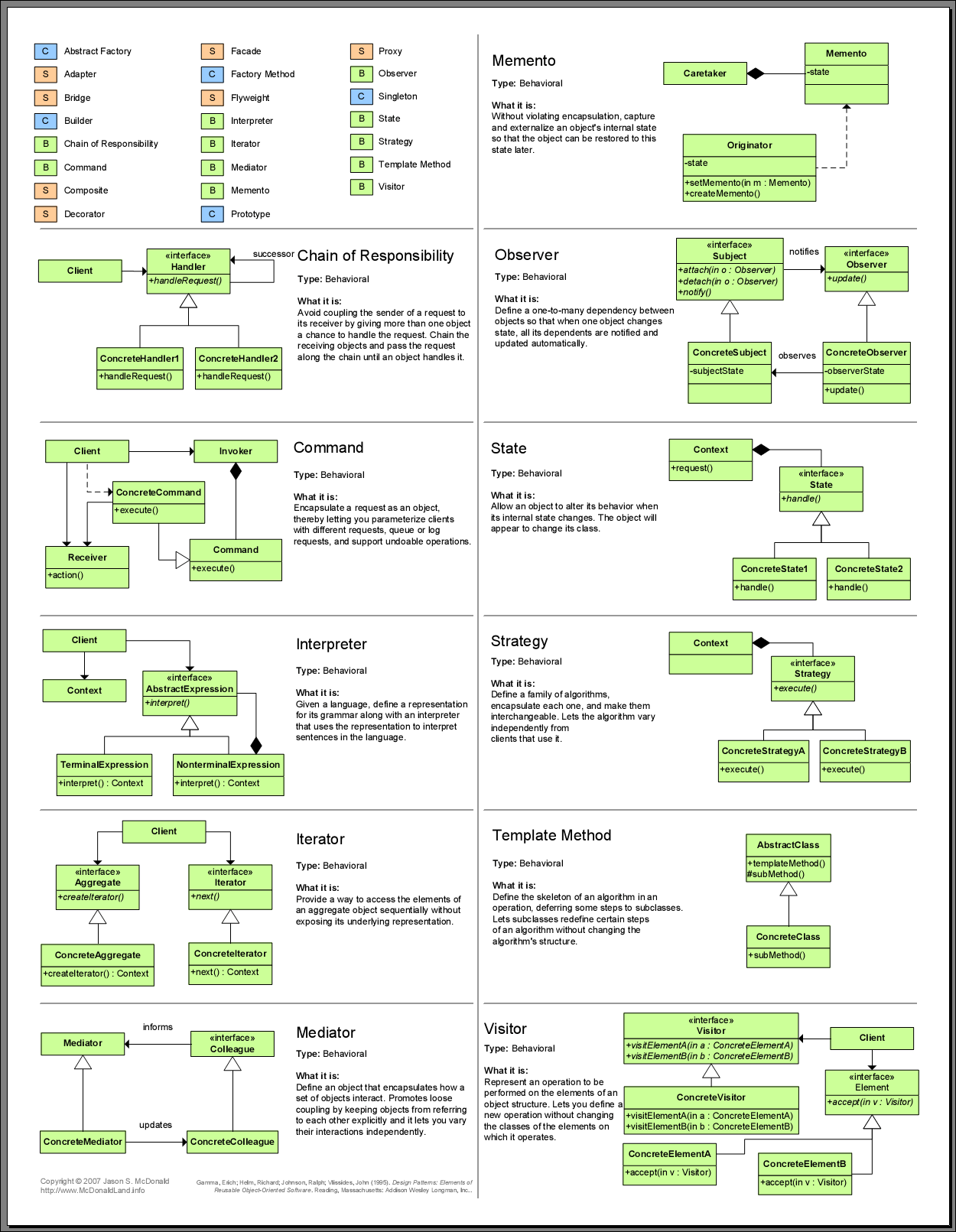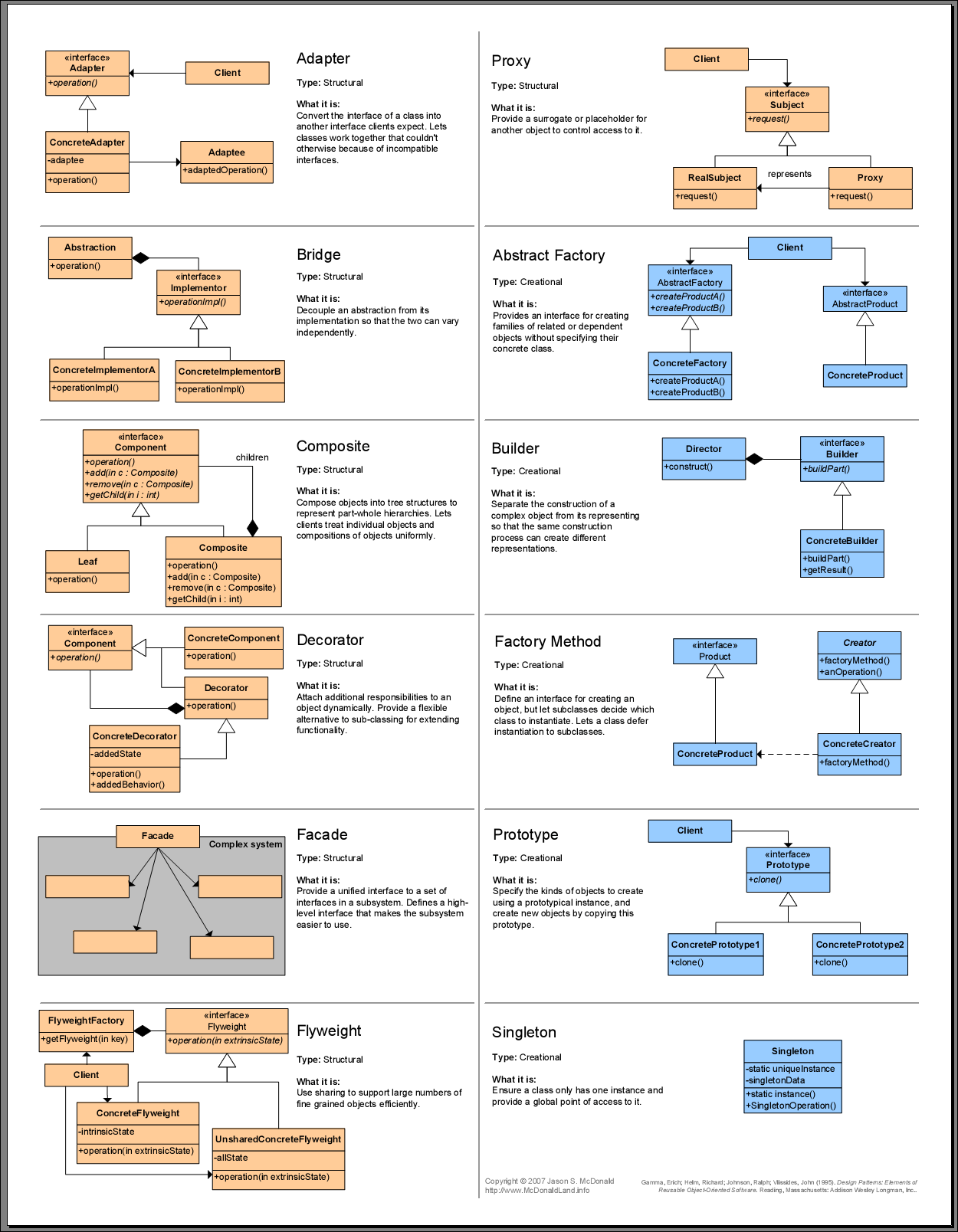§ GoF의 디자인 패턴이란?
먼저, GoF란 Design Patterns: Elements of Reusable Object-Oriented Software이란 책을 쓰신
Erich Gamma, Richard Helm, Ralph Johnson, John Vlissides 네명의 사람들을 가리키는 Gang
of Four로 표현되어지는데 이를 약어로 GoF라 쓰고있다.
GoF에 나오는 디자인 패턴이란 소프트웨어 개발자들이 소프트웨어를 구현을 할 때 이루어지는
구조들을 정리한 내용이다.
개발자들이 알게 모르게 자주 쓰는 기법들을 어휘화 해서 정리하여 이름을 붙인 패턴들이 GoF에는
총 23개가 정리 되어있는데 생성패턴은 5개, 구조패턴은 7개, 행위패턴은 11개로 이루어 져있다.
1. 생성패턴(Creational Patterns)
Abstract Factory groups object factories that have a common theme.
Builder constructs complex objects by separating construction and representation.
Factory Method creates objects without specifying the exact class to create.
Prototype creates objects by cloning an existing object.
Singleton restricts object creation for a class to only one instance.
2. 구조패턴(Structural Patterns)
Adapter allows classes with incompatible interfaces to work together by wrapping its own
interface around that of an already existing class.
Bridge decouples an abstraction from its implementation so that the two can vary independently.
Composite composes one-or-more similar objects so that they can be manipulated as one object.
Decorator dynamically adds/overrides behaviour in an existing method of an object.
Facade provides a simplified interface to a large body of code.
Flyweight reduces the cost of creating and manipulating a large number of similar objects.
Proxy provides a placeholder for another object to control access, reduce cost, and reduce complexity.
3. 행위패턴(Behavioral Patterns)
Chain of Responsibility delegates commands to a chain of processing objects.
Command creates objects which encapsulate actions and parameters.
Interpreter implements a specialized language.
Iterator accesses the elements of an object sequentially without exposing its underlying
representation.
Mediator allows loose coupling between classes by being the only class that has detailed
knowledge of their methods.
Memento provides the ability to restore an object to its previous state (undo).
Observer is a publish/subscribe pattern which allows a number of observer objects to see an event.
State allows an object to alter its behavior when its internal state changes.
Strategy allows one of a family of algorithms to be selected on-the-fly at runtime.
Template Method defines the skeleton of an algorithm as an abstract class, allowing its subclasses
to provide concrete behavior.
Visitor separates an algorithm from an object structure by moving the hierarchy of methods into
one object.


출저: http://www.mcdonaldland.info/2007/11/28/40/

 invalid-file
invalid-file